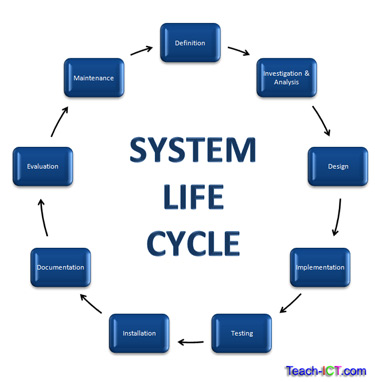1. Introduction
At some stage, most businesses will need a new computerised system to help them with their day to day tasks.
This could be a system to keep track of all the students' names, addresses, telephone numbers and grades, or it could be a new system for an online bank to let customers open a new account.
No matter what the system might be, if the organisation doesn't conduct a 'systems analysis' (often known as the system life cycle), they are likely to find that their new system disappoints them and doesn't solve the original problem.
We will be looking at the various stages of a systems analysis over the next few pages.
You may find that books or websites list the stages slightly differently, although if you read them carefully, they do actually cover the same issues.
Definition of the problem
The first stage in the SLC is to define the problem. The system analyst must find out why a new system is required. After all, if there isn't a problem to start with, why would they need to proceed?
The analyst will interview management and staff to find out what they think are the main problems and why they feel a new system is required.
This stage is not as detailed as the investigation and analysis stages, it is there to provide the foundation for beginning the SLC process
